The usual thing is to FAIL taking this type of Photos
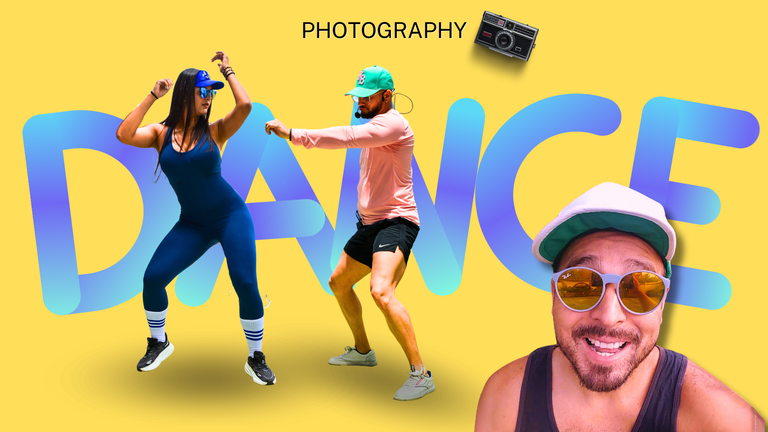
Recently, a couple of weeks ago, I was working as a photographer at a sporting event. The activity was divided into two disciplines, the first one was Xtreme bike and the second one was a dance therapy.
I had to record and take pictures of the activity in order to report on that celebration that several instructors prepared, for the first time, as a sports option for the inhabitants of the city where I live, in San Antonio de Los Altos, Miranda state, in Venezuela.
The place where I had to take the photos and videos was outdoors, which is always a challenge because of the light that changes in the environment due to the sun, the clouds and in this particular case, because the structure was under the shadow of a wall, after midday.
The first appointment was at eleven o'clock in the morning and the next pattern came together and started at 2 o'clock in the afternoon.
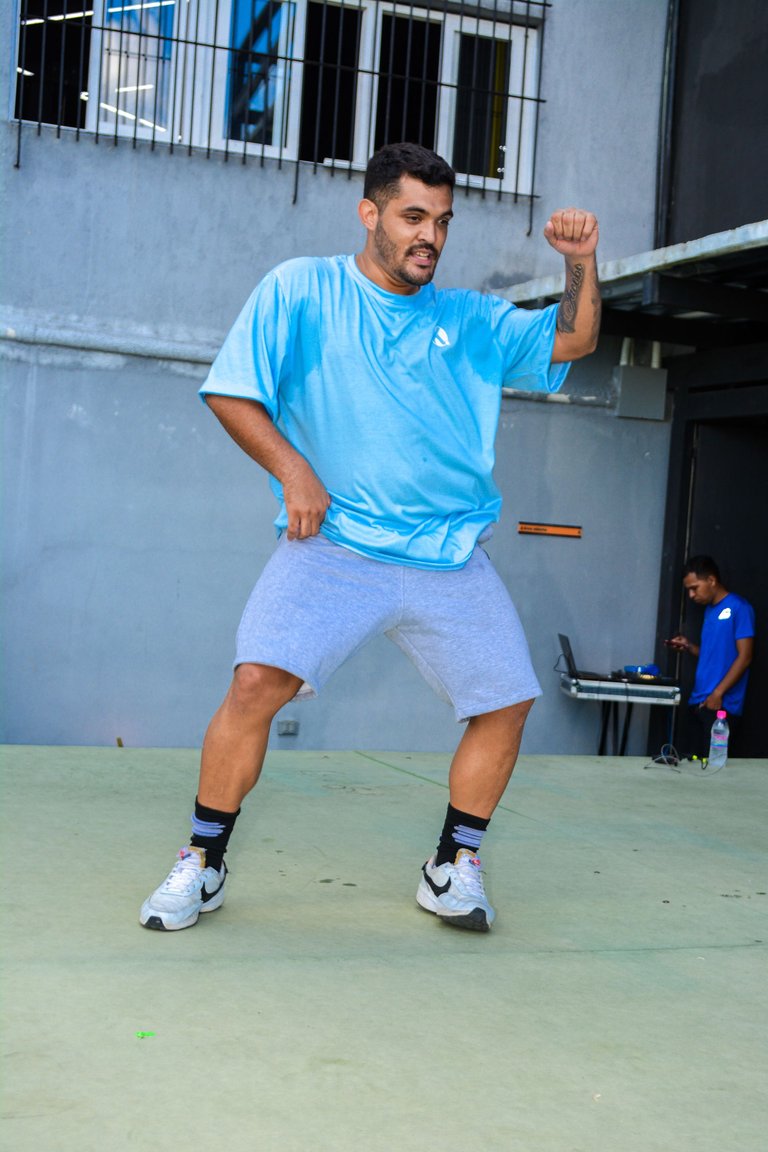
On this occasion I'm going to show only the ones from the dance to explain a few things.
Taking moving pictures, especially of someone dancing, is extremely tricky. There is a divine luck, so to speak, in getting an image that entirely satisfies the artistic part, which in this case has a lot to do with the resulting silhouette and, above all, with the facial expression.
It is not enough to have the camera in burst mode, nor is it enough to use a hot shoe flash, you also have to be foresighted to follow the model, as if to anticipate the pose she will strike when she does her dance pass and, with the luck of religions, dogmas, the idiosyncrasy you have in matters of faith, see how that quasi-mathematical calculation turns out.
During the dance there are sudden movements. The man or the woman is not there posing, no. In such a way, you have no control at all over how that is going to look that you as a photographer imagine and crave.
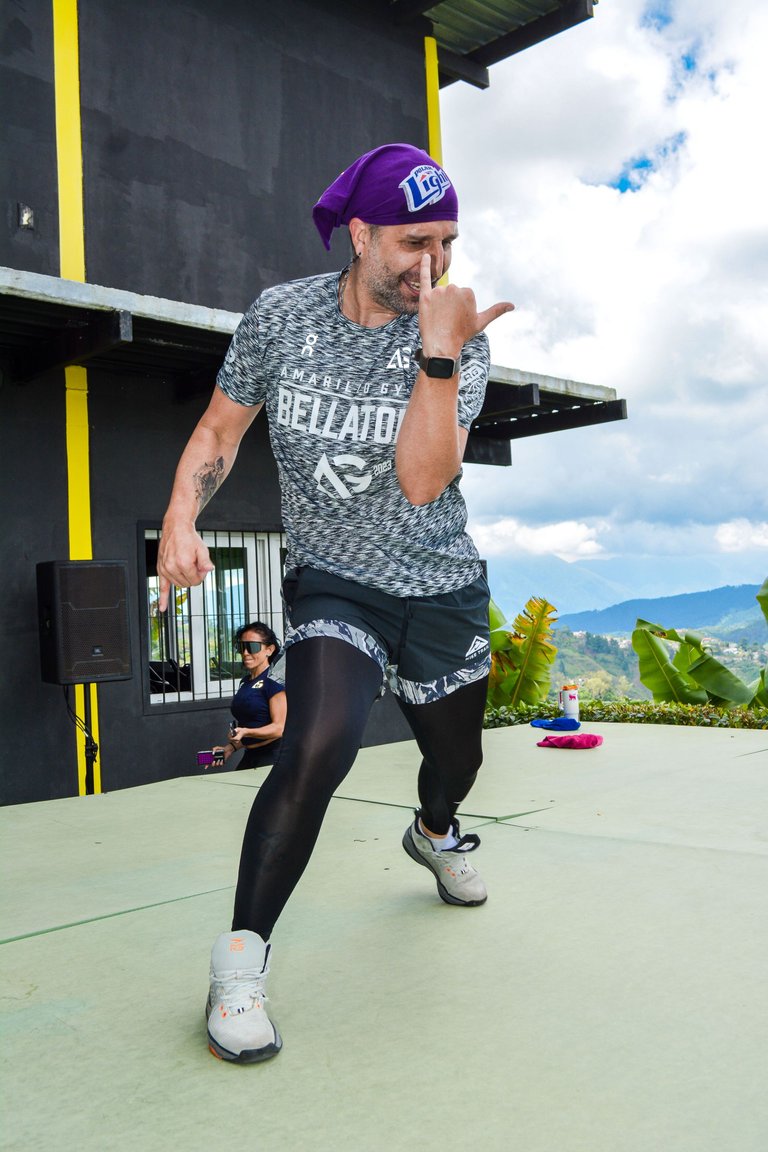
I'm going to be honest with you, the usual thing is to fail, that out of many photos only a few are the ones that comply with the body and facial expression. You have a lot of photos that mean your presence as the one who reviews the event and only a couple of them will be the ones that will highlight your work behind the lens.
And by the way, why is it important to use a flash if there is enough light? The intense light that they emit helps you to define much more the movement, also accentuates the skin, with that unique touch that gives that flash and if you graduate the intensity well, the result will please those who danced for you during those few seconds.

At these types of events, I've noticed that most crave that precious image that you can give them. Fewer and fewer faces of annoyed people (who are in all their rights to feel invaded by your presence there taking pictures of them) warn you that they are not comfortable with being portrayed, or they are just there for sport.
I am one of those who uses a wooden knife because I belong to a blacksmith's house. I don't like having my picture taken, nor do I enjoy having my picture taken, so I understand the body language of those who don't want their picture taken, hide their face, pretend to be distracted, or make some gesture that they don't want to be bothered.
There is a dilemma when I run into people like that. It doesn't bother me at all. I take the picture, whether it looks bad or good. I'm there to review the event. I know what's at stake when I get among the dancers trying to capture an endearing image and that's when I err as a journalist by clicking, because it's easier to delete the photo, not to use it, than to repeat the moment.

I have been scolded many, many times, especially in queen elections, where I always tend to be that intruder who does not let the public see. After all, I'm 6'2” tall and I'm a big guy, so I do the thousands of tricks to ‘hide’ and not be in the middle of that scene that is being invaded by cell phones, witnesses and people who went just to enjoy.
The same thing happened during the dance therapy, and even more happened during the spinning session, which I will talk about in the next post. Somehow, part of the job is to get through, try to make as little discomfort as possible and apologize, if that's the case.
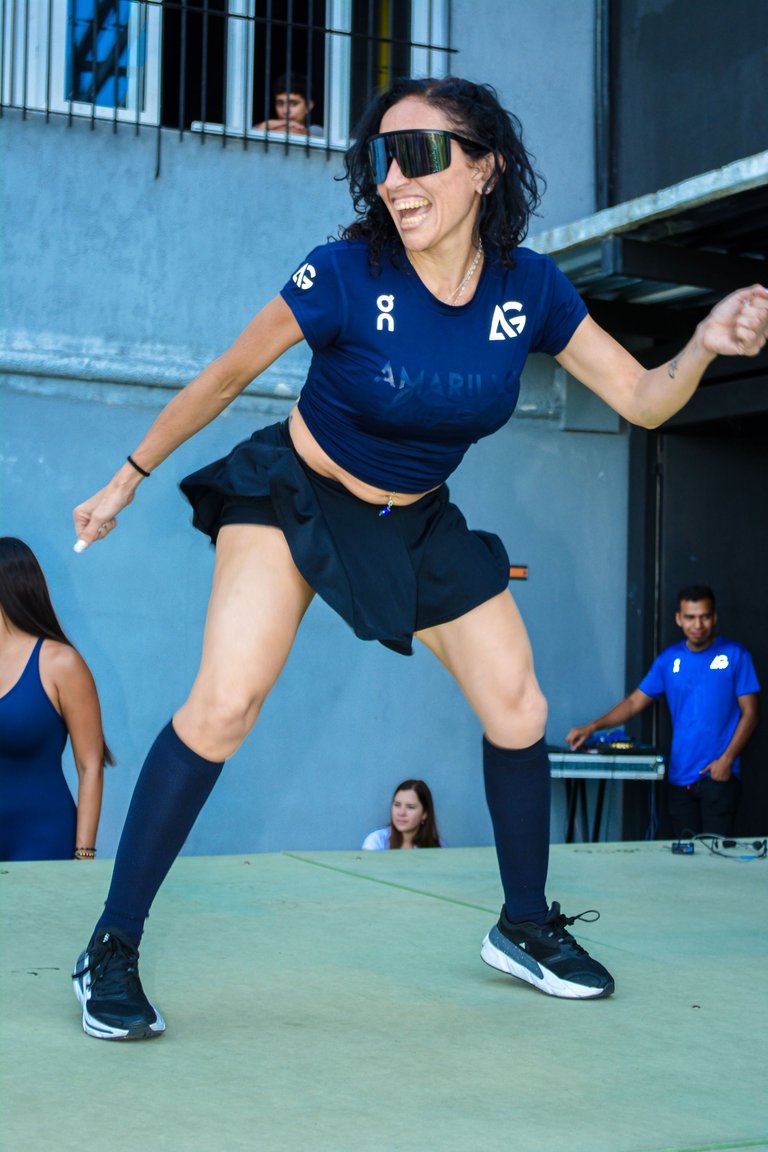
The prize for the skeptics of networks and photos, like me, is the photo. The vindication is precisely to show that that annoyance you generated to people when you were in the middle was worth it and resulted in a good image that they can show off in their social networks.
When that happens, when they upload the photo you took to their Whatsapp statuses, Instagram, Facebook or X, that triumph finally reaches the photographer and that gesture of admiration feels very special, both silent (because they do not label you as the one who took the photo) and for those who boast that it was you who took that image that they exhibit in their galleries.
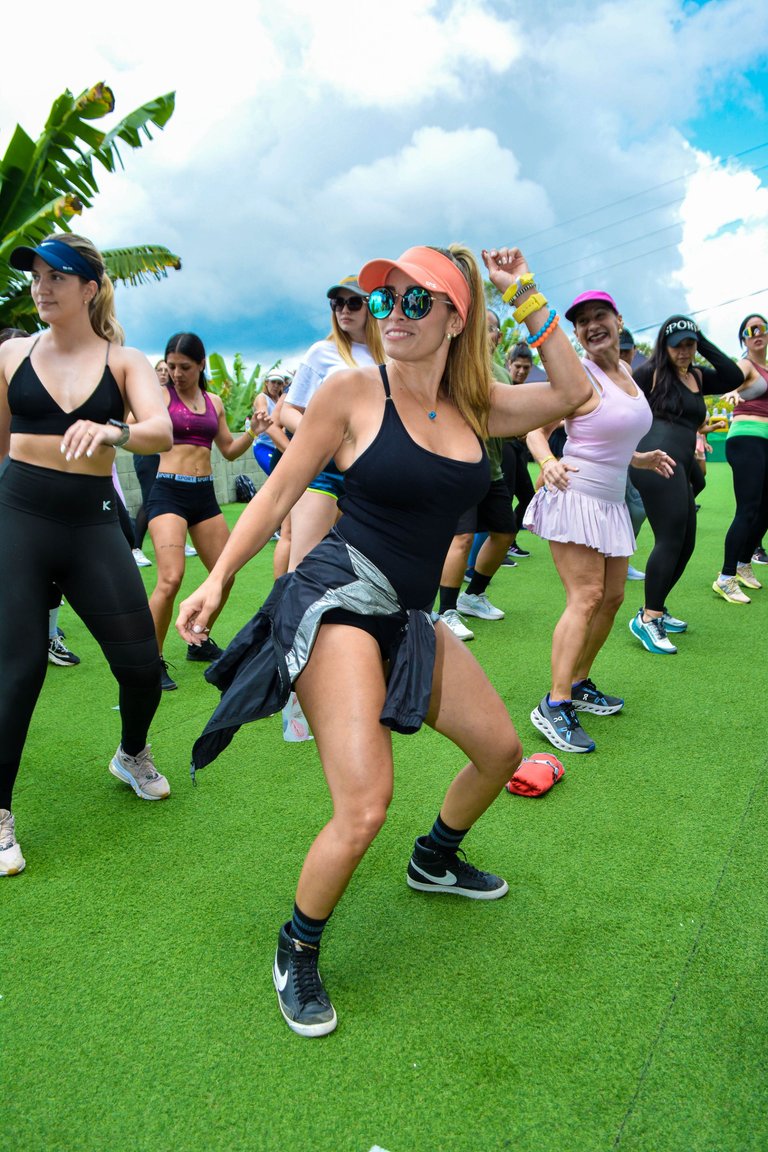
You see, a simple photo is not a simple photo. There are a series of determinations in the midst of that story that was portrayed. There are things that turn out well and others end up badly and it's all part of the job.
I hope you liked this selection and, especially, what is behind some simple photos.
My Instagram: @fotosymedia
PRESS HERE FOR ENGLISH VERSION

Recientemente, hace un par de semanas, estuve trabajado como fotógrafo en un evento deportivo. La actividad estaba dividida en dos disciplinas, la primera de ellas de Xtreme bike y la segunda era una bailoterapia.
Tenía que grabar y tomar fotos de la actividad para reseñar aquel agasajo que prepararon varios instructores, por primera vez, como una opción deportiva para los habitantes de la ciudad en donde vivo, en San Antonio de Los Altos, estado Miranda, en Venezuela.
El sitio donde debía realizar las fotos y videos era al aire libre, lo que siempre supone un desafío por la luz que cambia en el entorno debido al sol, las nubes y en este caso en particular, porque la estructura quedaba bajo la sombra de una pared, después del medio día.
La primera cita era a las once de la mañana y la siguiente pauta se juntó y comenzó a las 2 de la tarde.

En esta ocasión voy a mostrar sólo las del baile para explicarles algunas cosas.
Hacer fotos en movimiento, especialmente de alguien bailando, es sumamente complicado. Hay una suerte divina, por así decirlo, en obtener una imagen que satisfaga enteramente la parte artística, que en este caso tiene mucho que ver con la silueta resultante y, sobre todo, con la expresión facial.
No es suficiente tener la cámara en modo ráfaga, tampoco usar un flash de zapata, además de ello hay que ser previsivo de seguir al modelo, como para adelantarte a aquella pose que va a poner cuando haga su pase de baile y con la suerte de las religiones, los dogmas, la idiosincrasia que tengas en materia de fe, ver cómo resulta aquel cálculo cuasi matemático.
Durante el baile hay movimientos bruscos. El hombre o la mujer no está allí posando, no. De tal forma, no tienes para nada el control de cómo va a verse eso que tú como fotógrafo imaginas y ansías.

Les voy a ser honesto, lo habitual es fracasar, que de muchas fotos sólo sean pocas las que cumplan con aquello de la expresión corporal y del rostro. Tienes un lote de fotos que significan tu presencia como quien reseña el evento y sólo algún par van a ser las que diferencialmente destacarán tu labor detrás del lente.
Y a todas estas, ¿por qué es importante usar un flash si hay suficiente luz? La luz intensa que emiten ellos te ayuda a definir mucho más el movimiento, acentúa también la piel, con ese toqué único que da ese destello y si le gradúas bien la intensidad, el resultado agradará a los que bailaron para ti durante esos pocos segundos.

En este tipo de eventos, he notado que la mayoría ansía esa preciada imagen que tú puedes darles. Ya cada vez son menos las caras de personas molestas (que están en todos sus derechos de sentirse invadidos por tu presencia allí tomándoles fotos) que te advierten que no se sienten a gusto con ser retratados, o simplemente están allí para hacer deporte.
Yo soy uno de esos que usa un cuchillo de palo por pertenecer a la casa de un herrero. No me gusta que me tomen fotos, ni disfruto tomarme fotos, por ello entiendo el lenguaje corporal de quien no desea una foto, oculta su cara, se hace el distraído, o hace algún gesto de que no quiere ser molestado.
Hay una disyuntiva cuando me topo con personas así. No me molesta en absoluto. Yo tomo la foto, así quede mal o resulte bien. Yo estoy allí para reseñar el evento. Sé lo que me juego cuando me meto entre los bailadores tratando de capturar una imagen entrañable y es allí cuando peco de periodista al hacer click, porque la foto es más fácil borrarla, no usarla, que repetir el momento.

A mí me han regañado muchísimas veces, sobre todo en elecciones de reina, donde siempre suele ser ese intruso atravesado que no deja ver al público. Después de todo, mido 1.82 cm y soy alguien corpulento, así que hago las miles de maromas para "esconderme" y no quedar en medio de aquella escena que está siendo invadida por celulares, testigos y gente que fue sólo a disfrutar.
Durante la bailoterapia sucedió lo mismo, y más aún ocurrió en la sesión de spinning, de la que hablaré en el siguiente post. De alguna forma, parte del trabajo es atravesarte, tratar de incomodar lo menos posible y pedir disculpa, si así fuese el caso.

El premio para los escépticos de las redes y de las fotos, como yo, es la foto. La reivindicación es precisamente demostrar que aquel fastidio que le generaste a la gente cuando estabas atravesado en el medio valió la pena y resultó en una buena imagen que puedan lucir en sus redes sociales.
Cuando ocurre eso, cuando suben la foto que tomaste a sus estados de Whatsapp, a Instagram, Facebook o X, aquel triunfo finalmente llega al fotógrafo y se siente muy especial ese gesto de admiración, tanto silencioso (porque no te etiqueten como quien les tomó la foto) como por aquellos que hacen alarde de que fuiste tú quien les tomó aquella imagen que exhiben en sus galerías.

Ya ven que una simple foto no es una simple foto. Hay una serie de determinaciones en medio de aquella historia que fue retratada. Hay cosas que resultan bien y otras terminan mal y todo es parte del trabajo.
Espero les hayan gustado esta selección y, especialmente, lo que hay detrás de unas simples fotos.
My Instagram: @fotosymedia
Posted Using InLeo Alpha
Hey hi Miguel,
I totally agree with you : taking pictures of people dancing is quite a challenge! That's what I've been doing for 8 years now and I'm still learning as it's different with each dancer.
I do everything in manual mode and I never use the continuous shooting mode : for me, the challenge of pulling the trigger at the exact moment as you anticipated the dancer's movement is the thing that I really like in it. I never use flash during the day because of the special type of pictures I take (IR) but I understand what you mean.
Taking pictures of people who don't want it is really tricky, even if you're covering an event. Fortunately, I don't have to deal with that as I always work with persons who like it a lot and they ask for it.
People who use your photographic work without giving you a shout out is something very rude the way I see it : you gave time and efforts for them and they just have to mention the author : you. This is a steal, it's tolerated for photography and that's one of the many reasons our art is so devaluated nowadays.
Thank you for sharing your experience with all of us :)
You are so right, you can apply all your knowledge and still not get a good photo. You have to shoot many times with your camera. Of course, the knowledge I share here can help you, rather than hinder you in your goal of getting a great memory.
Muy buenas orientaciones que das para tomar fotos,es verdad que hay gente que no les gustas las fotos, pero hay que hacerlos entender, porque es un trabajo pago, bellas imágenes, saludos @miguelmederico
siempre hay que ponerse del lado del cliente y en este caso más. La cuestión es siempre tener esa raciocinio y paciencia para proseguir. Saluditos y bendiciones.